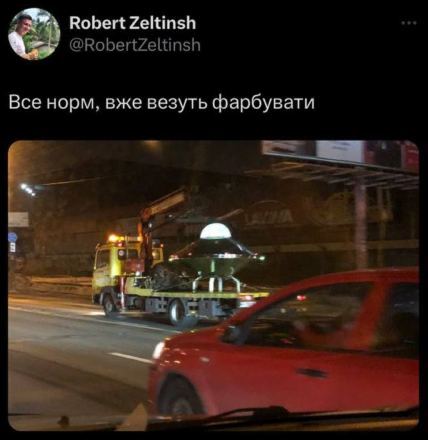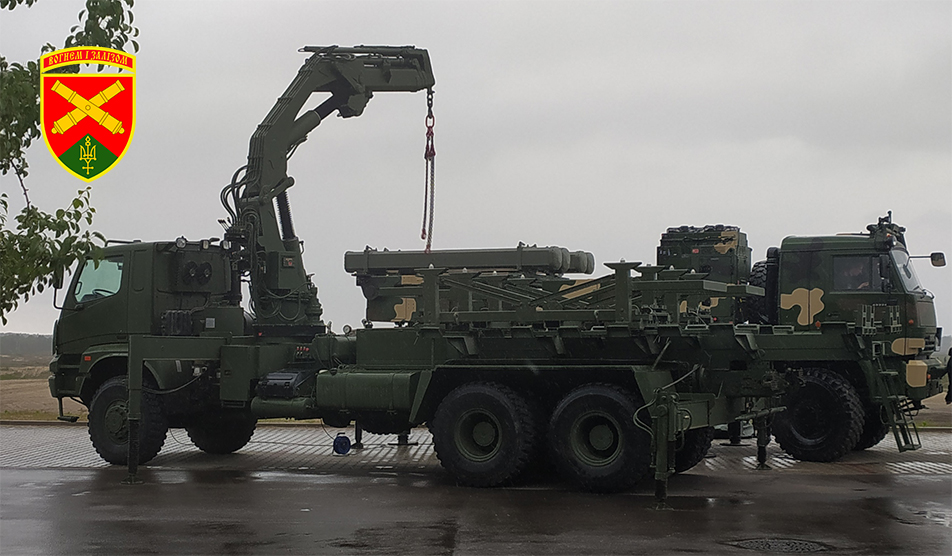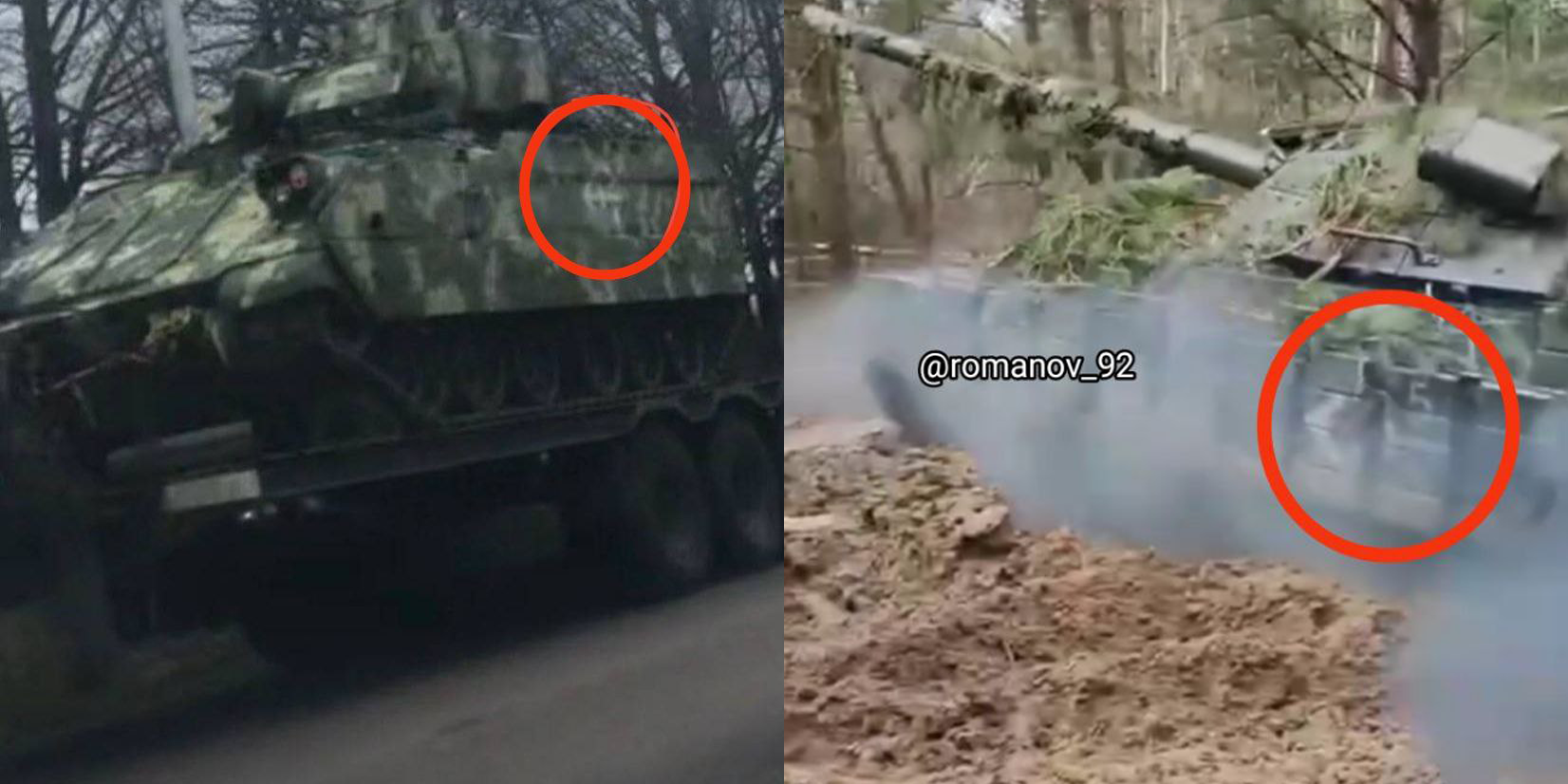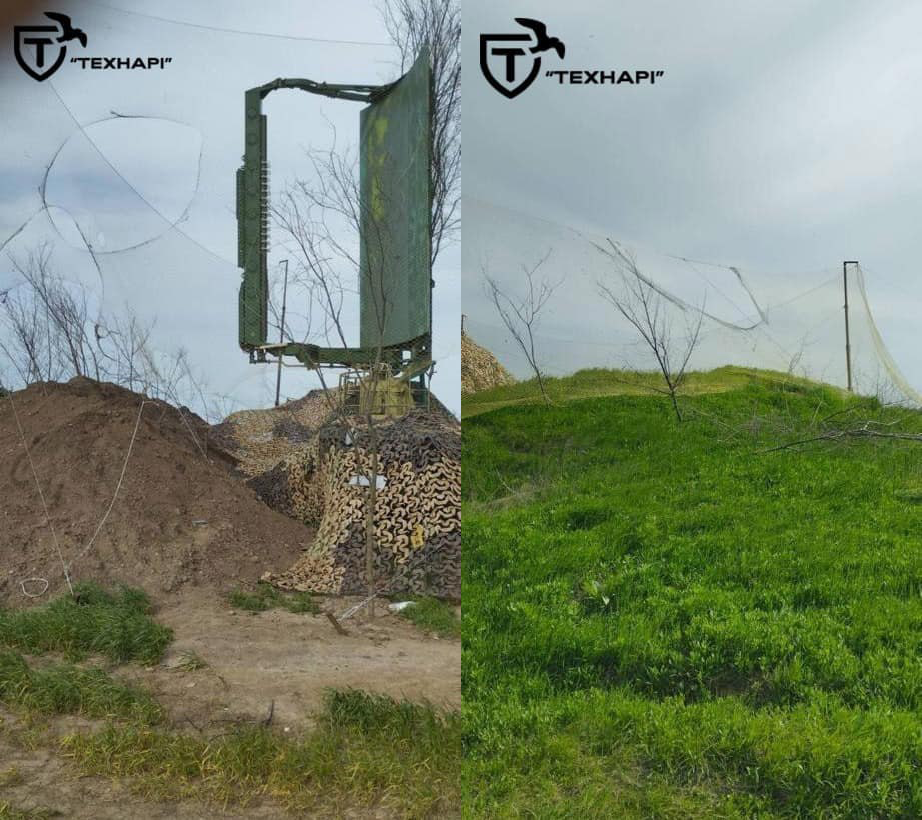In today's summary:
- The supply lines of the Ukrainian group in Bakhmut are under threat;
- In the Belgorod region, 30 people have died since the beginning of the full-scale war;
- Evidence of the use by Russia of cluster bombs – weapons of indiscriminate action;
- Russia received a new batch of kamikaze drones of the Shahed family;
- Meteorite over Kyiv;
- The manufacturer HIMARS cannot increase the supply of missiles for the Armed Forces of Ukraine due to a shortage of engines;
- Prospects for the counteroffensive of the Armed Forces of Ukraine;
- NATO Secretary General Jens Stoltenberg visited Kyiv.
The situation at the front
Open data researcher Def Mon writes that the Russian military in Bakhmut could threaten one of the few remaining supply lines for the Ukrainian Armed Forces. According to his analysis, the Russian forces have advanced through the forest plantation almost to the "road of life", along which the troops are supplied and the wounded are taken out. They may try to establish fire control over her with small arms. A similar situation can be observed on the map of the Deep State project. In addition, Def Mon published fragments of a 3D Google Earth map, which show that all other supply routes are most likely in the line of sight of the Russians.

On the Ugledar sector of the front, according to the project of the Z-commander Semyon Pegov WarGonzo, the Armed Forces of Ukraine conducted reconnaissance in combat on the outskirts of Pavlovka. The Russian military, in turn, attacked Velyka Novosyolka, Novoukrainka and Vuhledar. The shelling of Ugledar is confirmed by the General Staff of the Armed Forces of Ukraine. This is what the city looks like now. Despite the massive destruction, there are still surviving houses in which people live.
In the Avdiivka direction, according to the General Staff of the Armed Forces of Ukraine, the Russian military conducted unsuccessful offensive operations in the areas of Avdiivka, Vodyany and Pervomaisky.
Mutual shelling
Russia has intensified its air attacks as it received a new batch of Iranian kamikaze drones of the Shahed family. It was with them that on the night of April 20, she attacked Ukraine. This was stated by the head of the Joint Coordinating Press Center of the Southern Defense Forces Natalya Gumenyuk. According to her, drones with new markings were recorded in the Mykolaiv and Odessa regions.
“They were building up reserves. We see that their missile stocks, brought to a critical minimum, force them to take such pauses and look for new ways of putting pressure on the rear areas of Ukraine. That is why they, in anticipation of an additional batch of Iranian kamikaze drones, took such a break. Now they have received UAVs and are starting to use them,” Gumenyuk said.
In a report by the Ukrainian project Hromadske Telebachennya from the village of Fedorovka, Bakhmut district, a local resident demonstrates a SHOAB-0.5 submunition from the Russian RBC-500 cluster bomb. Previously, Russian aviation massively used such bombs on residential areas in Syria (although the Russian Ministry of Defense denied this at the time). The full-scale Russian invasion of Ukraine used cluster munitions from the very beginning, but the previous (and so far the only) evidence of the use of cluster bombs comes from March 2022.
The principle of operation of cluster munitions is to disperse submunitions over a large area, which makes it possible to hit, for example, field camps, open-air warehouses or lightly armored vehicles. However, when such munitions are used, many submunitions do not explode and continue to pose a threat to civilians. Although neither Russia nor Ukraine has signed a convention banning cluster munitions, they are by definition indiscriminate weapons that are prohibited from being used in populated areas.
On April 19, an unknown drone was found at the Pskov airport. According to RIA Novosti with reference to the National Guard, no explosives were found on it. Pro-Kremlin media write that the size of the UAV is about 30 by 30 centimeters. He was allegedly found by airport cleaners in the aircraft parking area. According to Baza, the drone carried a camera from which recordings will be extracted. The publication also reports that after watching the video from external surveillance cameras, it turned out that the UAV was flying over the airport on the evening of April 18. Now it has been sent for examination, as the DNA of the launcher could remain on it.
According to “military correspondent” Yevgeny Poddubny, at night the Russian military launched a series of attacks on Ukrainian military facilities. In particular, according to him, explosions were heard in Ochakov, Mykolaiv region, in Belopolye, Sumy region, in the Kharkiv region, near Kupyansk, and in the Dnieper. In the latter case, Russia used Iranian kamikaze drones.
The governor of the Belgorod region, Vyacheslav Gladkov , said that during the full-scale invasion in the region, 30 people were killed under shelling. In January 2023, during a meeting with Vladimir Putin, he spoke of 25 dead. The number of wounded reached 123 people. Also, according to Gladkov, 3267 houses were damaged or destroyed and 660 cars were destroyed in the Belgorod region.

On the evening of April 19, residents of Kyiv reported a strange flash in the sky, which was initially associated with the work of air defense. The State Space Agency of Ukraine said that most likely it was a meteorite fall from the Lyrid stream. Parts of it appear to be flying out of the constellation Lyra. Experts stressed that every year the Earth passes through the trail of comet Thatcher, leaving the Lyrid meteor shower. Most often this happens in April. Of course, in the very first minutes after the outbreak, memes about UFOs and aliens began to appear in Ukraine. Here are some of them.





Armaments and military equipment
The first photo of the Turkish tactical missile system Roketsan TRLG-230, which is in service with the 49th artillery brigade of the Armed Forces of Ukraine, has appeared . The guided 230 mm TRLG-230 missile has a range of up to 70 km and a high-explosive fragmentation warhead weighing 42 kg. Earlier, the delivery of these systems to Ukraine was reported by the Oryx OSINT project back in November 2022.

The Wall Street Journal writes that HIMARS manufacturer Lockheed Martin Corp. cannot increase the supply of GMLRS missiles for the Armed Forces. The company said it was hampered by a shortage of key components such as rocket engines. It follows that Lockheed Martin cannot keep up with the pace of deliveries necessary for a successful UAF counteroffensive.
Photo and video materials with American Bradley infantry fighting vehicles and Slovenian M-55S tanks, which were transferred to the 47th separate mechanized brigade of the Armed Forces of Ukraine, are being distributed on social networks. They show a new tactical sign – the "arrow", which some associate with the impending counteroffensive. The location where this video was filmed has not been established. It is worth recalling that the crosses on the equipment of the Armed Forces of Ukraine appeared before the start of the previous major operation east of Kharkov, and the 47th Motorized Brigade appears in leaked secret US documents as one of nine brigades that Ukraine's Western partners are equipping and training for the upcoming counteroffensive.

Denmark and the Netherlands will transfer 14 Leopard 2A4 tanks to Ukraine, but only at the beginning of 2024. They will probably be bought from a third party, after which they will be repaired. Earlier, Denmark, Germany and the Netherlands announced that they plan to work together to restore 178 old Leopard 1 tanks. After that, they will also be sent to Ukraine.
China has rejected the request of PMC "Wagner" for the supply of weapons. This is reported by the Financial Times, citing leaked US intelligence documents. According to the leak, mercenary representatives requested ammunition and military equipment in early 2023. However, as of early January, China "did not send any weapons, even for testing, and had no contact with PMCs regarding the supply of weapons," the report said. Neither Moscow nor Beijing commented on this information.
The Ukrainian military has fenced off their radar stations with fishing nets to protect them from Russian Lancet kamikaze drones. These drones have shown high efficiency in destroying the radar. Such a decision may seem ridiculous, but networks can indeed be effective when attacked by some Lancet models.

Prospects for the counter-offensive of the Armed Forces of Ukraine
Foreign Policy has released an article about the counteroffensive of the Armed Forces of Ukraine and its possible scenarios by the military observer Franz-Stefan Gadi. The very first sentence says that the first 24 hours of the operation could become the “longest day” for the Armed Forces of Ukraine (this is how the first day of Operation Overlord, June 6, 1944, when the fate of the Allied landing in Normandy was decided) is called. The expert emphasizes that in recent months the parties to the conflict have been working to exhaust each other. It is likely that the Ukrainian forces will not be able to avoid this during the counteroffensive either:
“Perhaps Ukraine has only one way to avoid the scourge of attrition in the early hours of the upcoming offensive: paralyze the Russian military leadership and sow panic in the ranks of Russian soldiers. Ukraine will have the best chance of success if the Russian military flees from the advancing Ukrainian troops without offering much resistance.”
At the initial stage of the offensive of the Armed Forces of Ukraine, the achievement of the effect of surprise will be of decisive importance for them. Tactical leadership is also important, especially the ability to make decisions at lower levels of command. This will allow more timely response to various opportunities that may open up on the battlefield. In addition, much depends on how quickly the Russian side can send its operational reserves to the front.
Russian plane hijacking investigation
The SBU is investigating the actions of the Ukrainian military, who, without the knowledge of the command, tried to hijack a Russian Su-24 or Su-34 aircraft last summer. A criminal case has been initiated under articles on treason and abuse of power. According to reports, the participants in the abduction attempted to recruit the Russian pilot. They planned that he would land the hijacked aircraft at the Kanatovo airfield in the Kirovograd region. He was supposed to give the dispatchers a false message about the accident, after which Ukraine would announce that he was captured. The pilot was promised money and new documents. At the same time, the FSB tried to extract secret information from the Ukrainian military. In the end, the pilot did not get in touch, and the Russian side attacked the airfield. As a result, the commander of the military unit was killed, 17 Ukrainian soldiers were wounded. Two fighter jets were also destroyed.
Stoltenberg in Kyiv
NATO Secretary General Jens Stoltenberg visited Kyiv. During his visit, he visited an exhibition of destroyed Russian military equipment on Mikhailovskaya Square and discussed with Vladimir Zelensky the prospects for Ukraine's entry into NATO:
“I understand that President Zelensky at the NATO summit in Vilnius will raise issues of Ukraine's membership and security guarantees for Ukraine, this will be among the priorities of the agenda. However, for now, NATO's main goal should be to ensure that Ukraine wins, as this is the only way to have a meaningful discussion about Ukraine's future membership."

Bonus: video of a Ukrainian drone hitting a Russian tank from two cameras at once – on the tank and on the drone.
About the main events of the war on April 19 – in the previous report: "The new PMC" Wolves "near Bakhmut, 7,000 missing Ukrainian soldiers, the raid of the "Shaheds" in the south of Ukraine. What is happening on the front line.


